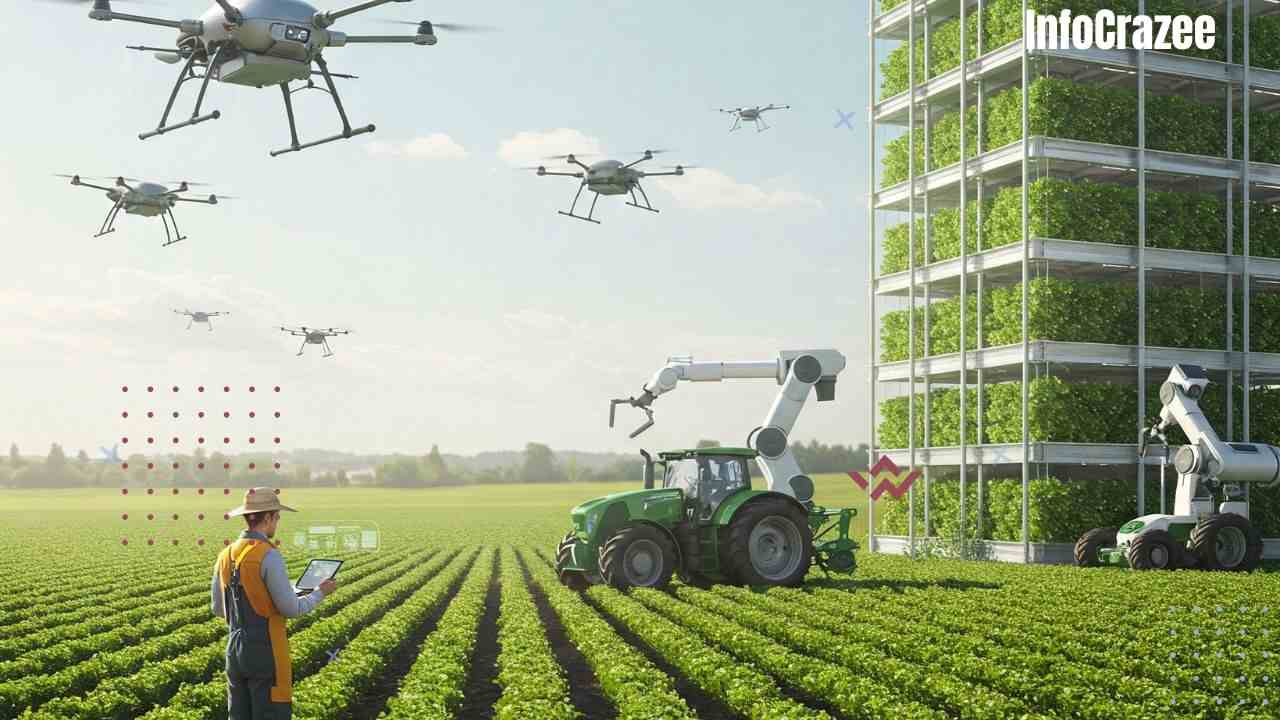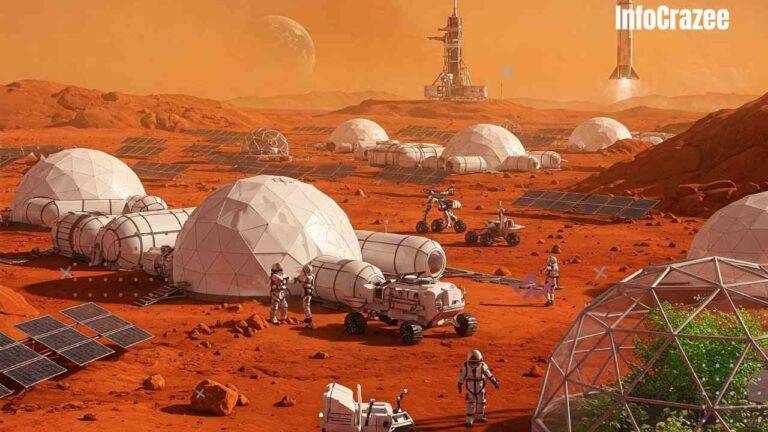Future Farming: How Technology Is Transforming Agriculture in 2025
Imagine a farm where drones buzz over fields, robots pick ripe tomatoes, and farmers track soil health from their smartphones. This isn’t a sci-fi movie—it’s what farming looks like in 2025. Technology is reshaping how we grow food, making it faster, smarter, and more sustainable.
Whether you’re a curious reader, a tech fan, or someone dreaming of working in agriculture, let’s explore how farming is changing and what it means for all of us.
Farming Meets the Future
Traditional farming has always been about hard work, patience, and a strong connection to the land. But today’s farmers are also becoming data analysts, drone operators, and tech problem-solvers.
Here are the biggest tech trends changing the game:
1. Smart Sensors for Smarter Soil
Farmers used to test soil manually. Now, they use smart sensors buried in the ground to track:
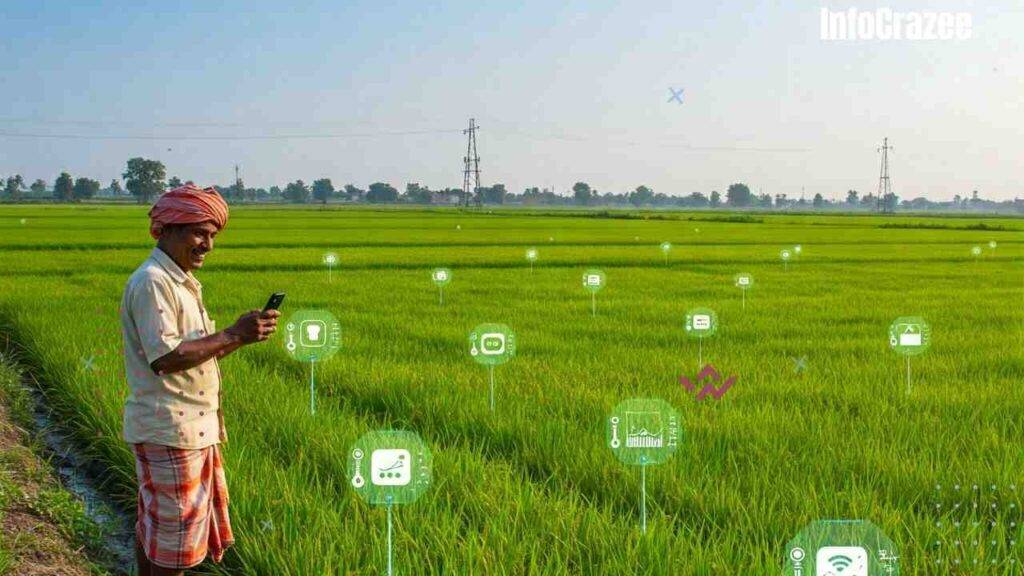
- Moisture levels
- Nutrient content
- pH balance
- Temperature
These real-time updates help farmers water only when needed and apply fertilizer more precisely—saving money and protecting the environment.
Example: A rice farmer in India uses soil sensors connected to his phone. Instead of guessing, he gets an alert when the soil needs water. No waste, better results.
2. Drones That Watch Over the Fields
Drones aren’t just for cool videos anymore. In 2025, they’re a farmer’s flying assistant.
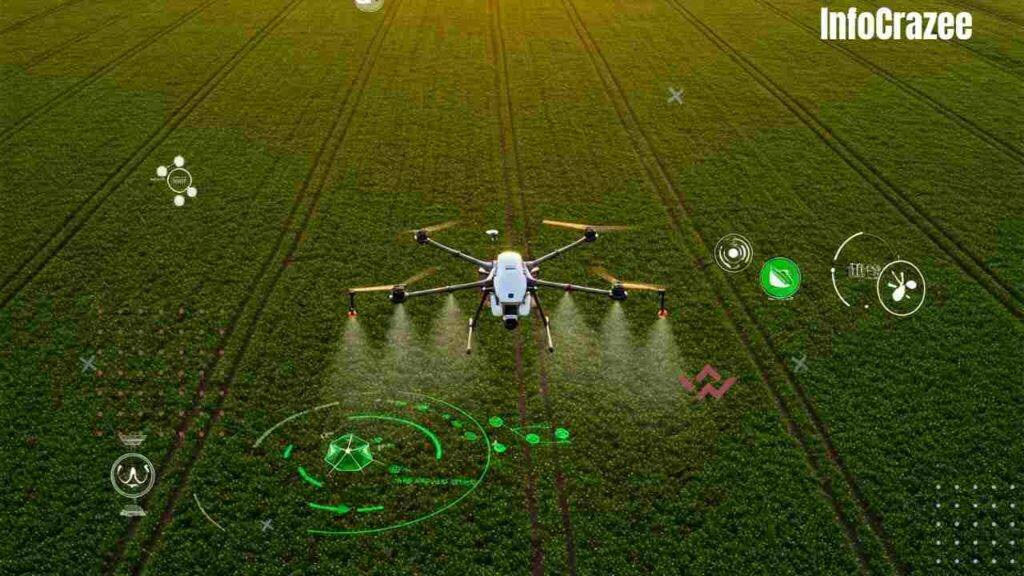
They help with:
- Monitoring crop health
- Detecting pests early
- Mapping large fields
- Spraying fertilizers or pesticides
Fun Fact: A single drone can scan hundreds of acres in minutes—something that would take hours on foot.
3. Robot Helpers on the Farm
Yes, robots are doing farm work now! From planting seeds to harvesting crops, automation is making life easier and increasing productivity.
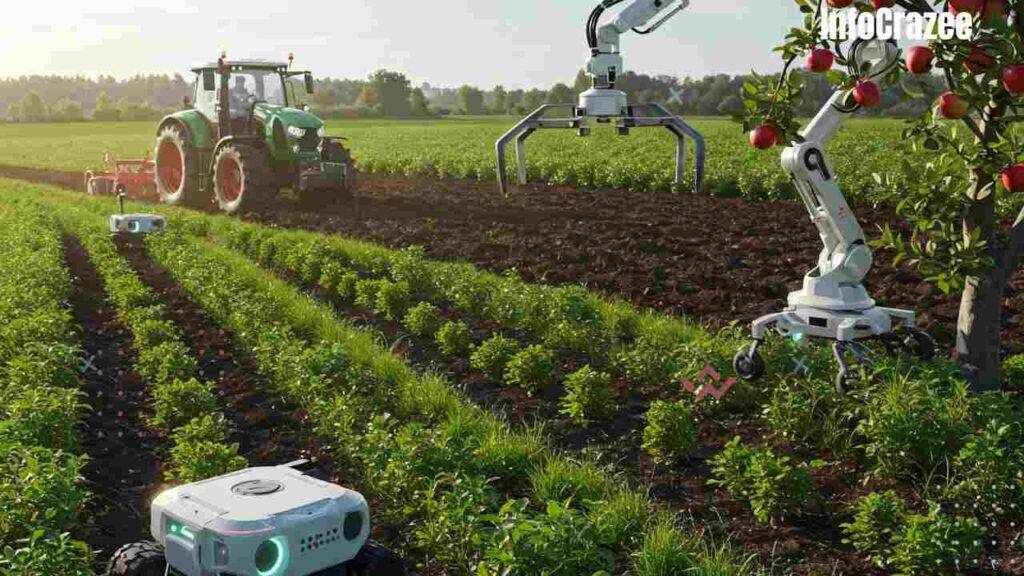
You’ll see:
- Self-driving tractors plowing fields
- Robotic arms picking fruits without bruising them
- Weeding robots identifying and removing unwanted plants
These machines work day and night without needing breaks.
4. AI-Powered Farm Decisions
Artificial Intelligence (AI) helps farmers make better choices by analyzing tons of data—weather forecasts, market prices, crop growth, and more.
With AI tools, farmers can:
- Predict the best time to plant
- Choose the most profitable crops
- Avoid crop failure by spotting issues early
Real World Use: A farmer in California uses an AI app to plan his harvest. The app warns him if a storm is coming and tells him the best day to collect his crops.
5. Vertical Farming in Cities
Land is limited, especially in crowded cities. Enter vertical farming—a method of growing crops in stacked layers indoors.

Benefits include:
- Using 90% less water
- No need for pesticides
- Year-round crop production
- Closer to consumers, reducing transport costs
Think of it like a high-tech greenhouse growing lettuce and herbs in the middle of New York or Tokyo.
Why This Matters
Farming tech isn’t just cool—it’s crucial. The world population is growing, but farmland isn’t. We need to grow more food using fewer resources.
Here’s how future farming helps:
- Reduces waste
- Boosts food security
- Protects the environment
- Creates new jobs in agri-tech
What It Means for You
Whether you’re a student, job seeker, or entrepreneur, this future opens up fresh opportunities:
For Students:
Study agriculture, data science, or robotics. New career paths are popping up fast.
For Job Seekers:
Jobs like “precision agriculture technician” or “drone operator” didn’t exist a few years ago. Now they’re in demand.
For Entrepreneurs:
Got an idea to make farming more efficient or sustainable? There’s a growing market ready for smart solutions.
Final Thoughts
Farming has come a long way from oxen and wooden plows. In 2025, it’s a high-tech adventure powered by innovation. Whether it’s drones watching over crops or AI guiding decisions, the goal is the same: grow food smarter, safer, and more sustainably.
So, the next time you bite into a fresh apple or enjoy a salad, remember—there’s a good chance a robot, drone, or AI helped make it happen.
FAQs
Q1: Is technology replacing farmers?
Not at all! Technology is helping farmers work more efficiently. Instead of replacing them, it’s giving them tools to grow better crops and make smarter choices.
Q2: Can small farmers afford these technologies?
Yes—slowly but surely. Many tools are becoming more affordable. Governments and NGOs are also helping small farmers access tech through grants and training programs.
Q3: What jobs are available in future farming?
Here are a few:
- Drone operator
- Precision ag technician
- Farm data analyst
- Robotics maintenance worker
- Indoor farm manager
You don’t need to be a farmer to be part of this revolution!
